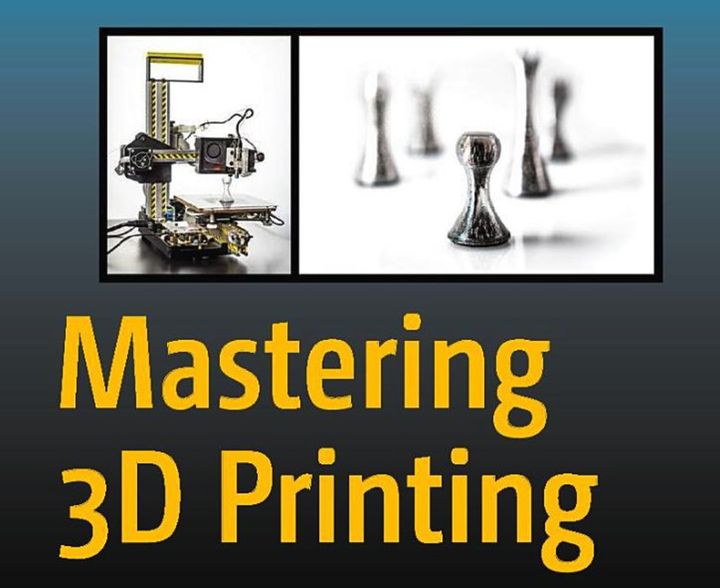
This week’s selection is “Mastering 3D Printing: A Guide to Modeling, Printing, and Prototyping Paperback” by Joan Horvath and Rich Cameron.
Horvath and Cameron have previously teamed to publish other books on 3D printing, in their “Mastering 3D Printing” series. This series includes “Mastering 3D Printing in the Classroom”, and “3D Printed Science Projects”, both of which were selected as our Book of the Week previously.
This book provides an introductory journey into 3D printing for those who have not previously used the technology. While there have been plenty of books on this topic published in the past, this tome is contemporary, having been published only a few weeks ago.
Fabbaloo readers will know that this technology changes so rapidly that it’s hard to keep up to date. When reviewing books of this type you’ll find many, but they are now three, five or even seven years old, and the material contained within them is essentially out of date. This book contains current information.
Horvath and Cameron provide a basic overview of 3D printing history and how it is positioned within the spectrum of making machines. There’s an overview of the most common currently used 3D printing processes, including a discussion of GCODE concepts.
The basic questions necessary to select a 3D printer are reviewed in an entire chapter, where such issues as “open or closed?”, “resin or filament?”, “kit or assembled?” are answered in simple language. Their answers cover the consequences of a printer decision. For example, if you were to select a resin 3D printer hoping to achieve higher resolution, you would also gain the need for a washing and curing workstation.
While the book does not delve too deeply into resin or powder-based 3D printing, it does spend several chapters digging into the operational issues one would encounter while using a filament-based 3D printer. They even have a section dedicated to troubleshooting very common problems such as clogged nozzles, grinding noises and poor extrusions.
Another chapter is dedicated to aspects of post-processing, another commitment you’ll make when deciding to operate a desktop 3D printer. They review the most common techniques, including painting, sanding and dyeing.
Finally, the book spends many pages exploring 3D models. They review file format, sources for pre-designed 3D models ready for printing, and briefly explain how one might go about designing one’s own custom 3D models. Some discussion of multi-material 3D prints is included.
For an introductory book on 3D printing, this one seems pretty decent and includes contemporary concepts, unlike many of the older introductions to 3D printing. It would make a great gift to someone who’s considering acquiring their own 3D printer but needs some additional instruction.
Via Amazon
